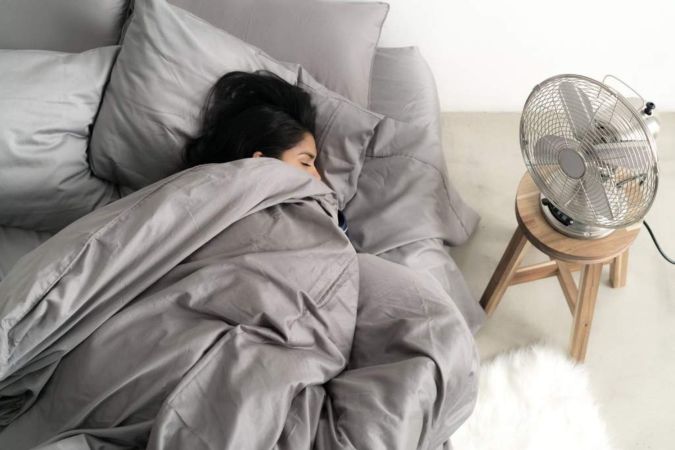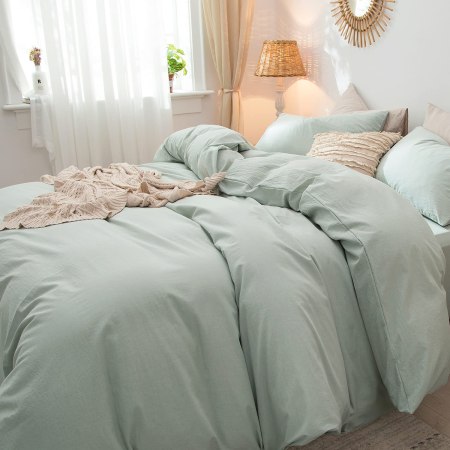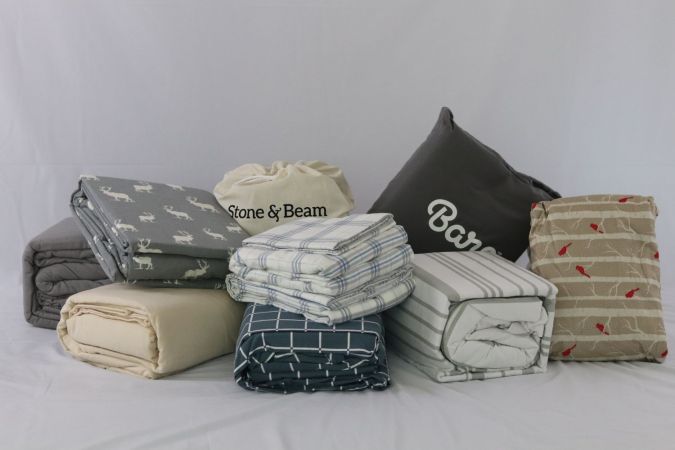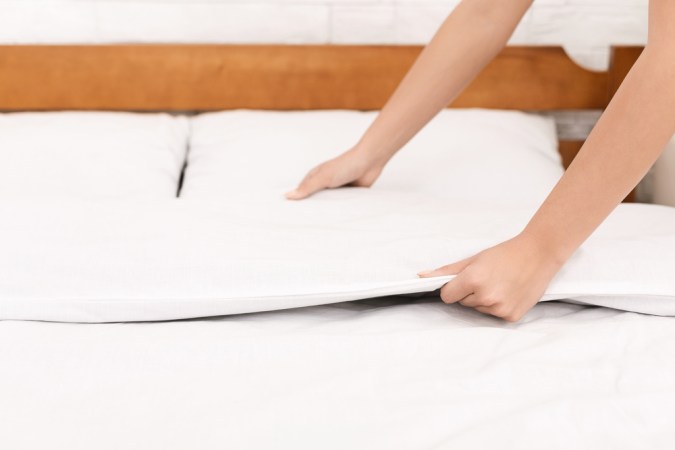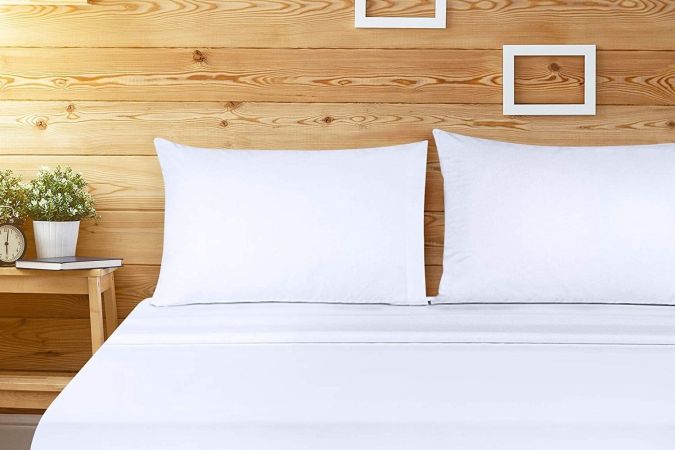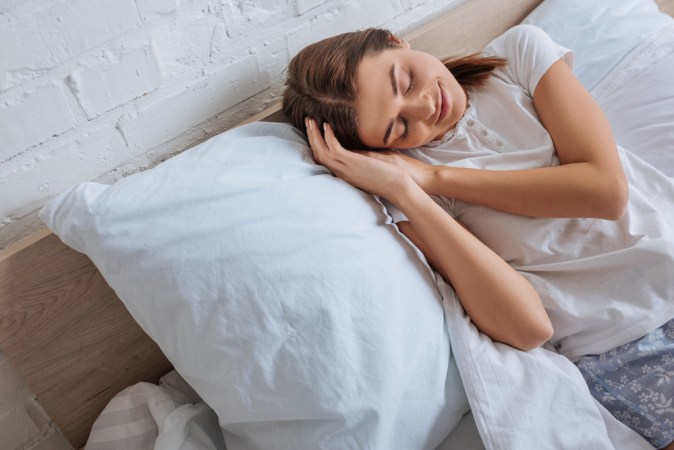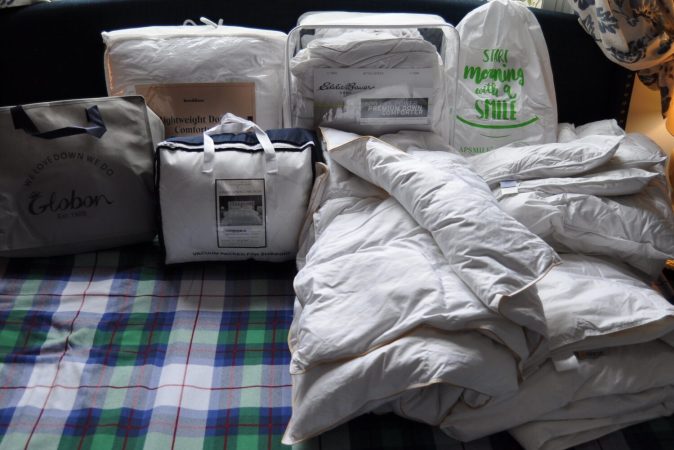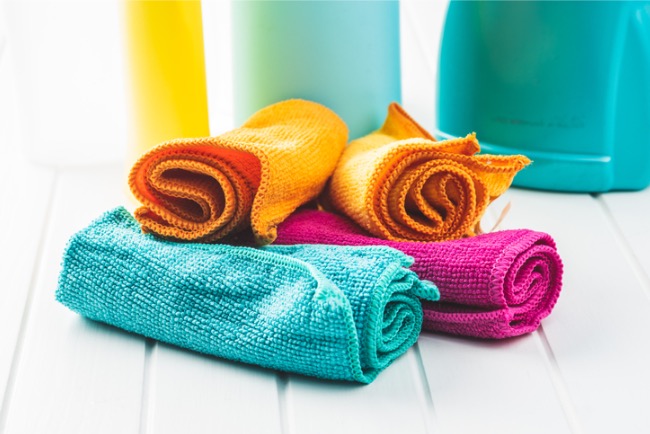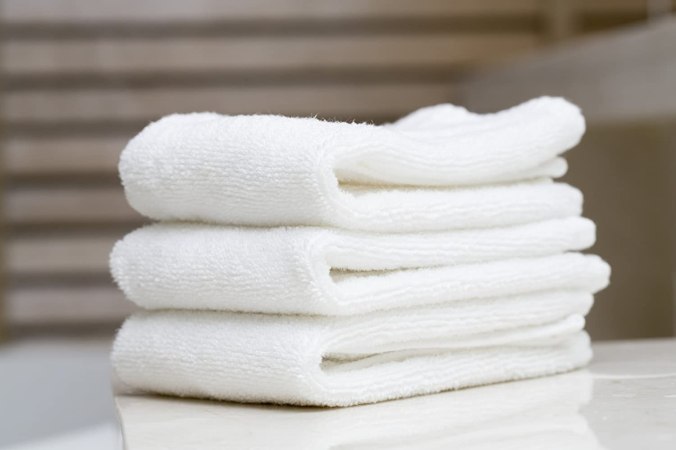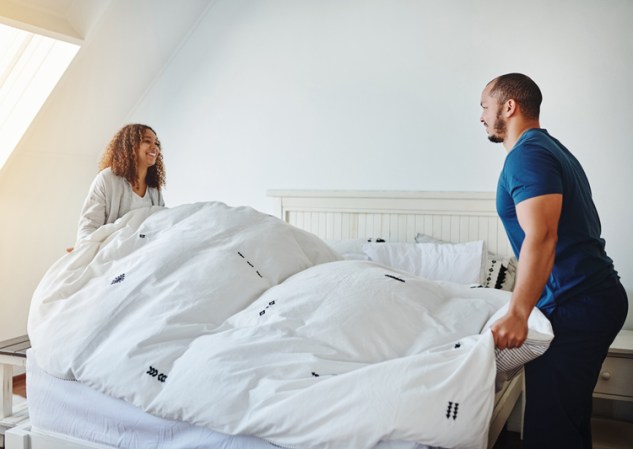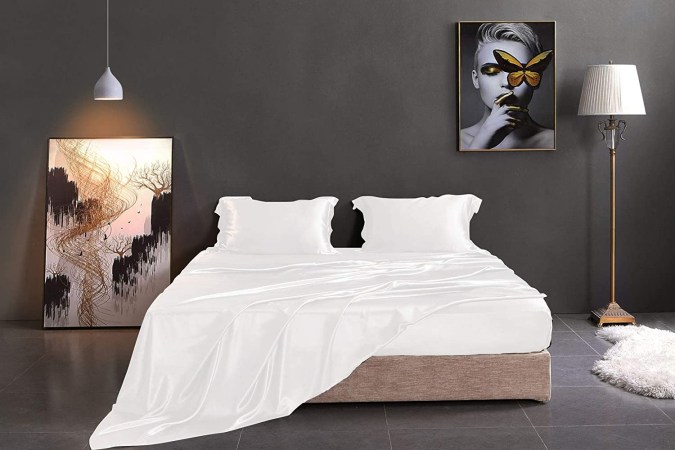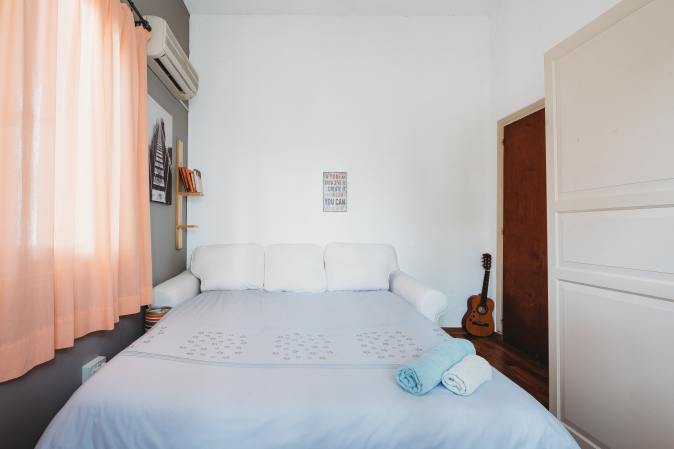We may earn revenue from the products available on this page and participate in affiliate programs. Learn More ›
It’s hard to stay comfortable at night when the numbers tick upward on the thermometer. Everything from the mattress to the duvet and sheets affect the bed’s breathability. And breathability matters. It’s what determines how well heat and moisture circulate.
Anything that traps heat (or moisture) could leave sweat trickling down your back. That’s why it’s important to find the right mix of materials that wick away moisture and let heat escape so sleepers can get cozy and comfortable.
The Science Behind Sleeping Cool
Science shows that the body’s temperature drops as it begins the sleep cycle. It continues to fluctuate throughout the sleep cycle but generally stays below the daytime temperature of 98.6 degrees. A 2012 study found that bedding and its ability to either help or hinder thermoregulation (your body’s ability to maintain a comfortable temperature) greatly affected sleep quality. If you get too hot later on, whether it’s from the environment or from bedding, you might have a hard time sleeping.
A too-warm sleeping environment and heavy bedding can both hurt your sleep cycle. A 2017 study found that more people struggled to sleep in the summer because of higher nighttime temperatures. Many people find that the flannel sheets and goose-down comforter they loved in the winter can make it harder to sleep in warmer temperatures. Consequently, controlling the temperature in the bedroom and using appropriate bedding for the seasons plays a pivotal role in getting a good night’s rest.
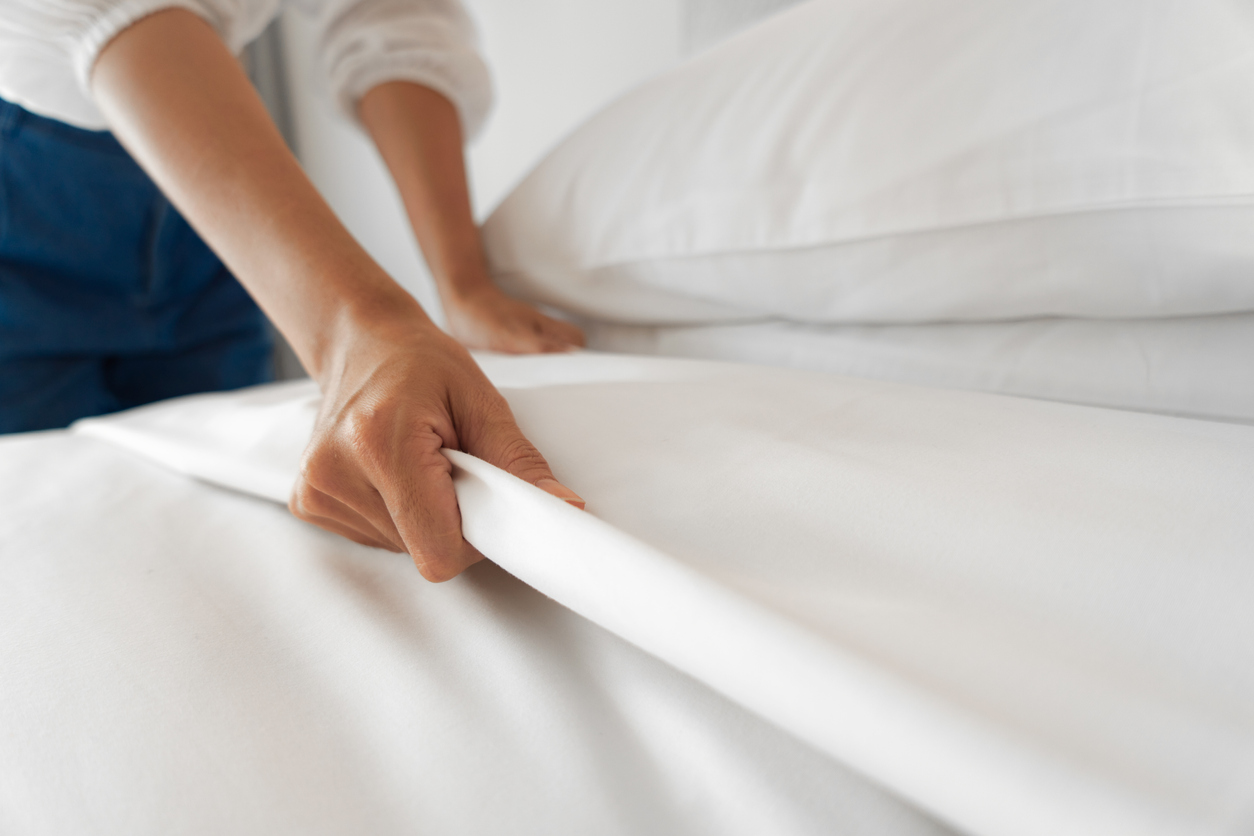
Types of Sheets That Will Keep You Cool
Breathable sheets—often called cooling sheets—wick away moisture and let heat escape from the bed. Natural fibers lead the way when it comes to breathability.
Cotton
Cotton fibers absorb moisture, removing it from the skin’s surface. The weave of cotton fabrics also allows heat to circulate away from the body.
Linen
Linen, a fabric created from the flax plant, has large fibers with ample space for heat to escape. Linen sheets can absorb a high amount of moisture before they begin to feel wet, helping it to further cool the body.
Bamboo
Bamboo sheets feature many of the same characteristics as those made of cotton, though it goes through a more rigorous manufacturing process. The resulting fabric is lightweight, breathable, and offers a heavier drape than cotton yet doesn’t trap body heat.
Don’t Forget Weave
Fabric choice makes a big difference in breathability. However, the fabric’s weave plays a key role, too. Opt for percale sheets or weaves over sateen sheets. Percale has a less dense weave that leaves more space between threads for heat to escape.
Can Certain Pillowcases Help Keep You Cool?
Heat escapes from your head, and if it stays trapped there, you’ll get overheated. The same materials—cotton, linen, bamboo—that create breathable sheets create breathable pillowcases, too. These fabrics allow heat to radiate away from the body, and wicks moisture away too.

Blankets, Duvets, Comforters and Other Outer Layers
You don’t have to store all your blankets when it’s hot outside. The breathable materials used to make bedding and pillowcases make for breathable blankets and duvet covers as well. When these fabrics are used for blankets, comforters and other bedding, however, they might come blended with other materials.
Cotton
Cotton blankets and duvet covers provide warmth but maintain the breathability for which cotton is famously known. High-quality cotton also gets softer with use and washing, so cotton bedding is an addition that gets better with time.
Linen
Linen blankets offer the weight of a blanket, but the fabric’s breathability keeps things cool. Linen’s rougher texture might take some getting used to but softens with time, just like cotton.
Silk
For those who want something a little more luxurious than cotton and linen, consider silk. Silk typically is not as breathable as cotton or linen. However, as a natural fabric, silk still provides breathability and moisture wicking but brings a smoothness that other breathable fabrics lack.
Fabrics to Take Off the Bed When It’s Hot
Memory foam mattress toppers tend to trap heat, and the high insulation of down duvets and comforters is probably too much for the summer months. If you want a mattress with a cushioned, breathable topper, consider something like the Purple mattress, which features a supportive, breathable gel grid that allows air to circulate.
Pillows made of memory foam or feathers might also contribute to overheating. Insulating bedding is best stored in the closet until cooler temperatures return. You also can put away sateen weave and flannel sheets. Both are more likely to make you overheat.
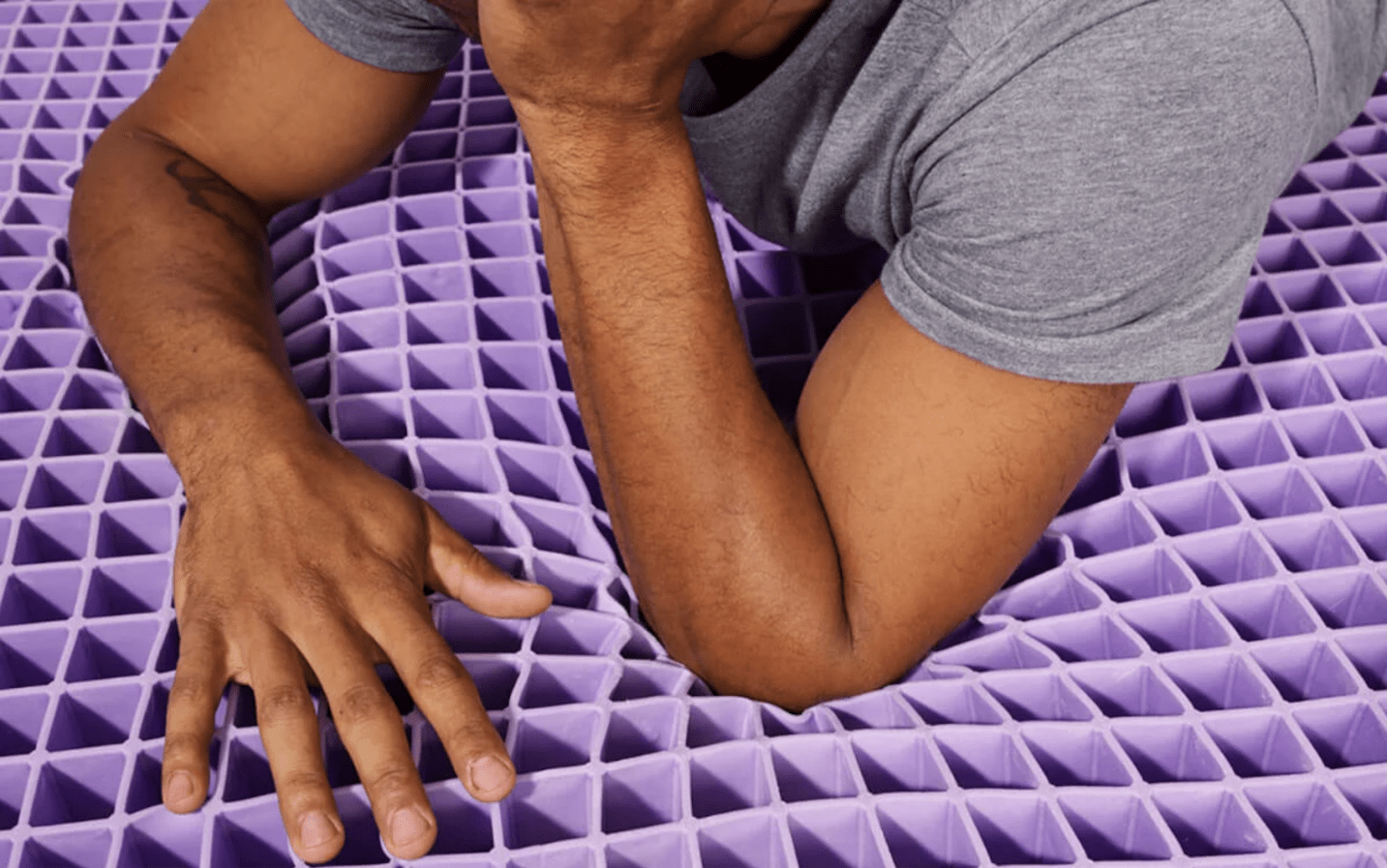
Final Thoughts
Cooling sheets are typically made of natural fabrics that breathe well and remove moisture from the skin. It might take some trial and error to find the right combination of sheets and bedding that keep you cool and offer a texture that lets you relax. Start with natural fabrics and add just enough layers to keep you comfortably warm.


